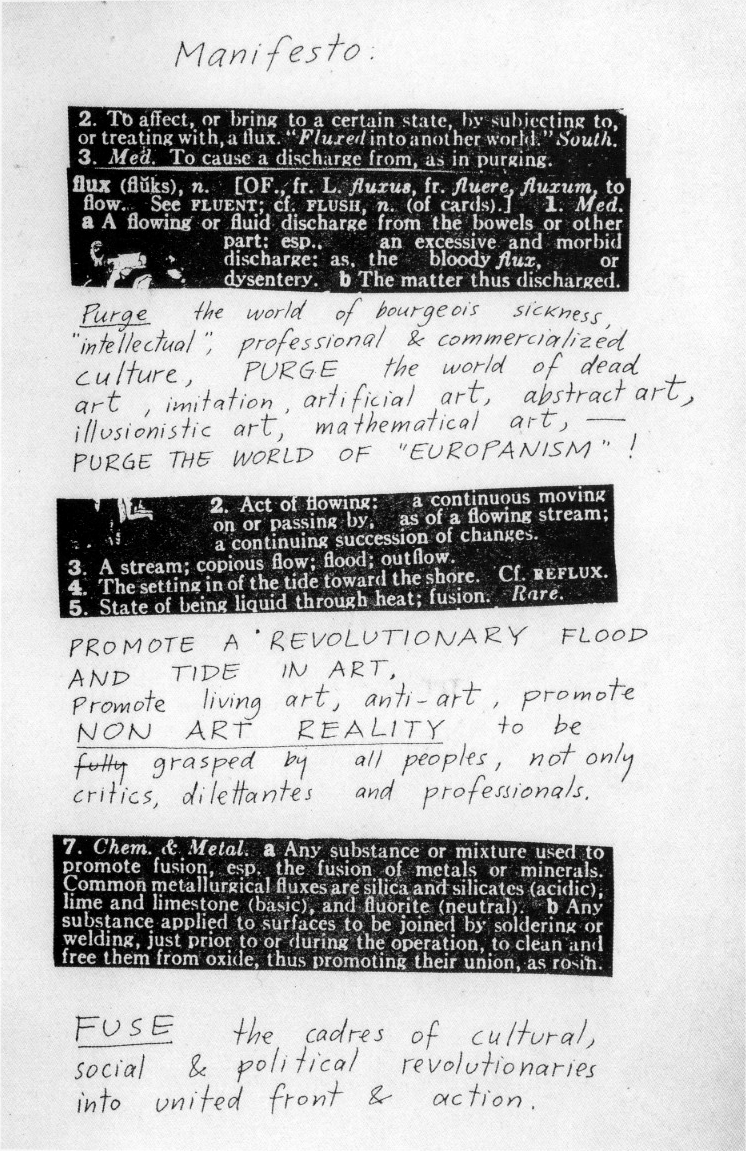Fluxus

Fluxus
Fluxus was an avant-garde, interdisciplinary art movement that gained prominence in the 1960s and 1970s, challenging the conventional understanding of art with its emphasis on the process over the finished product. It was pioneered by a diverse group of international artists, including the movement's founder George Maciunas, alongside other key figures like Yoko Ono, Nam June Paik, and Alison Knowles.
This movement drew heavily on the influences of John Cage, whose experimental music and Zen Buddhist philosophies were integral to Fluxus's formation, as well as Marcel Duchamp's concept of anti-art and readymades. Artists within Fluxus created works that blurred the boundaries between life and art, often incorporating everyday objects and sounds into their performances and compositions, embracing chance and audience participation.
Fluxus art is represented in many museums and galleries worldwide, where its legacy continues to influence contemporary art. For example, Yoko Ono's "Cut Piece" performance, where she invited audience members to cut away her clothing, is a notable work from this period. It is archived and has been reprised in various forms, reflecting the enduring nature of Fluxus.
As collectors, auctioneers, and experts in art and antiques, you may find the works of Fluxus artists to be challenging yet rewarding additions to your collections. Their pieces represent a critical moment in art history when the boundaries of what could be considered art were pushed and expanded.
For those interested in staying abreast of new acquisitions, sales, and events related to Fluxus art, I encourage you to sign up for updates. By doing so, you'll ensure that you're informed about opportunities to acquire works from this groundbreaking movement.
| Start of the period: | 1960 |
|---|